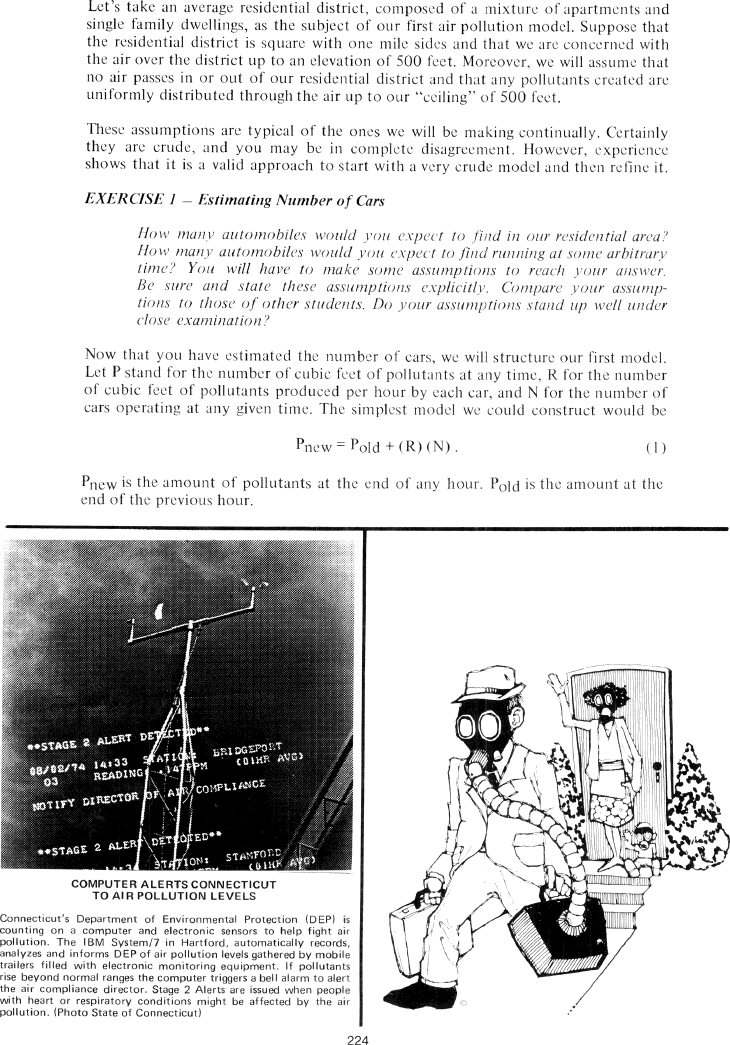The Best of Creative Computing Volume 1 (published 1976)
The Automobile and Air Pollution (exercises, estimating number of cars)

Let's take an average residential district, composed of a mixture of apartments
and
single family dwellings, as the subject of our first air pollution model.
Suppose that
the residential district is square with one mile sides and that we are concerned
with
the air over the district up to an elevation of 500 feet. Moreover, we will
assume that
no air passes in or out of our residential district and that any pollutants
created are
uniformly distributed through the air up to our "ceiling" of 500 feet.
These assumptions are typical of the ones we will be making continually.
Certainly
they are crude, and you may be in complete disagreement. However, experience
shows that it is a valid approach to start with a very crude model and then
refine it.
EXERCISE 1 _ Estimating Number of Cars
How many automobiles would you expect to find in our residential area?
How many automobiles would you expect to find running at some arbitrary
time? You will have to make some assumptions explicitly your answer.
Be sure and state these assumptions explicitly. Compare your assumptions
to those of other students. Do your assumptions stand up well under
close examination?
Now that you have estimated the number of cars, we will structure our first
model.
Let P stand for the number of cubic feet of pollutants at any time, R for the
number
of cubic feet of pollutants produced per hour by each car, and N for the number
of
cars operating at any given time. The simplest model we could construct would be
Pnew=Pold+(R)(N). (1)
Pnew is the amount of pollutants at the end of any hour.Pold is the
end of the previous hour.
[image]
COMPUTER ALERTS CONNECTICUT
T0 AIR POLLUTION LEVELS
Connecticut's Department of Environmental Protection (DEP) is
counting on a computer and electronic sensors to help fight air
pollution. The IBM System/7 in Hartford, automatically records
analyzes and informs DEP of air pollution levels gathered by mobile
trailers filled with electronic monitoring equipment. If pollutants
rise beyond normal ranges the computer triggers a bell alarm to alert
the air compliance director. Stage 2 Alerts are issued when people
with heart or respiratory conditions might be affected by the air
pollution. (Photo State of Connecticut)
224


